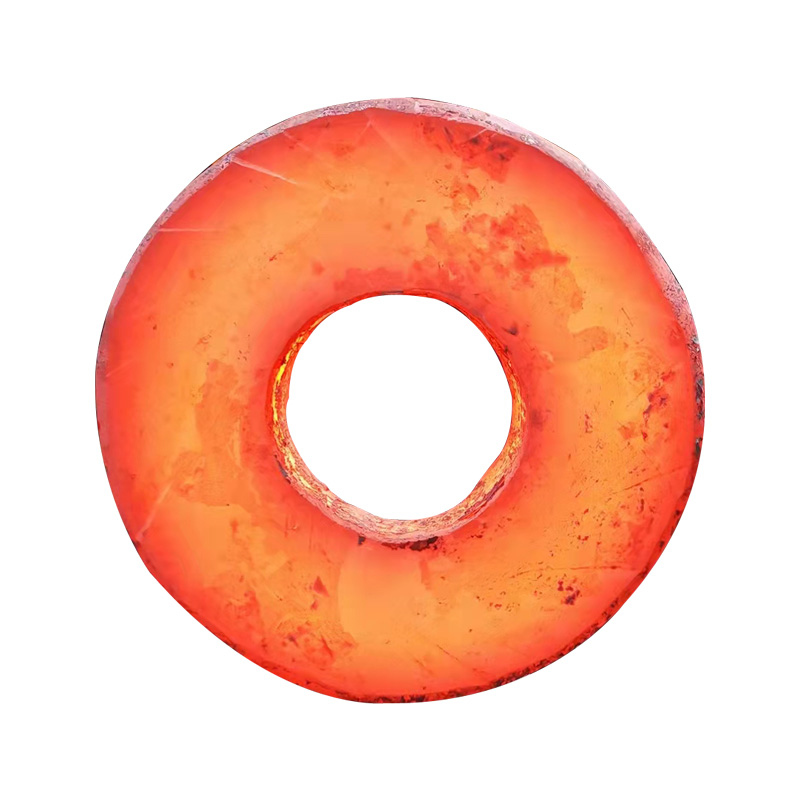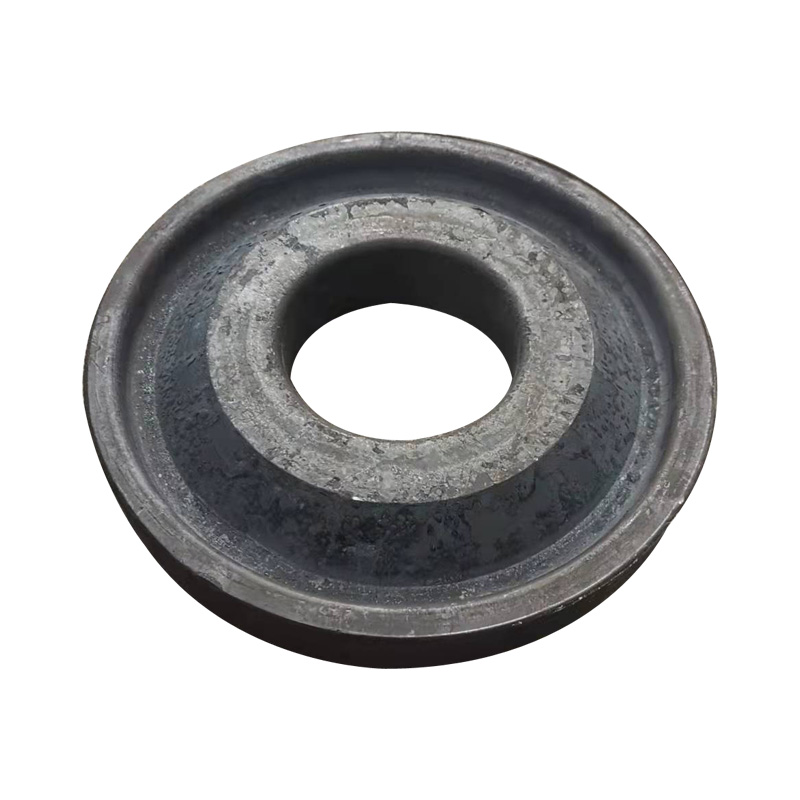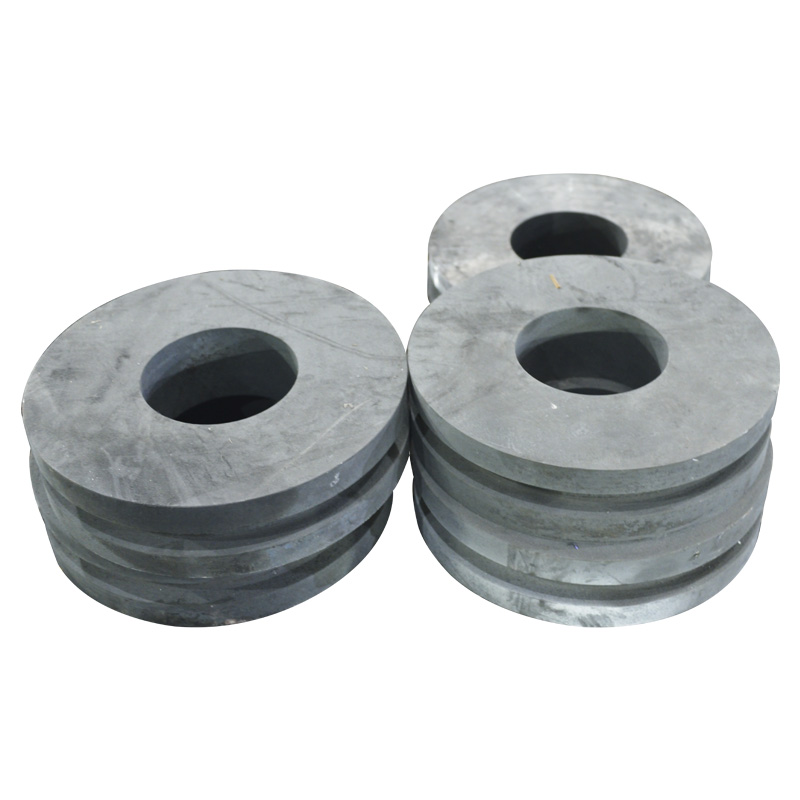What are the quenching media commonly used in forging works?
2022-05-18
Organic compound aqueous solution is a kind of quenching cooling medium used in forgings in recent years. It can reduce the tendency of deformation and cracking. By adjusting the mass fraction and temperature of organic compound appropriately, the aqueous solution with different cooling speed can be prepared according to various technological requirements. These aqueous solutions are generally non-toxic, odorless, smokeless, non-flammable and safe to use, and are a promising kind of quenching medium.
In this kind of quenching medium, polyvinyl alcohol aqueous solution is more commonly used. Polyvinyl alcohol (PVA) is a kind of non-toxic organic compound with white or slight yellow color, and is one of the raw materials for vinylon production.
When used as quenching medium, its commonly used aqueous solution moisture content is 0.1% ~0.5%, the service temperature is 20~45℃, the cooling ability is between oil and water, and can be adjusted by changing the maximum mass fraction of organic compounds. The medium should be properly stirred or circulated to improve the cooling effect.
When the heated workpiece enters pVA solution at high temperature, a vapor film is formed on the surface of the workpiece, and a gelatinous film is formed outside the vapor film. The forgings are surrounded by two layers of film, the heat is not easy to lose and the cooling speed is not high, so that the cooling stage of the steam film is prolonged, which is conducive to preventing the workpiece from quenching.
When it reaches the middle temperature zone, it enters the boiling stage, and the glue film and steam film break at the same time, and the cooling speed is accelerated. When the temperature drops to the low temperature zone, the pVA gel film dare to form again, and the cooling rate decreases. Therefore, the cooling speed of the solution in the high and low temperature zone is slow, while the cooling speed in the middle temperature zone is fast, with good cooling characteristics.
Polyvinyl alcohol is often used for quenching cooling of induction heating workpiece, carburizing and carburizing workpiece, and quenching cooling of alloy structural steel and die steel. Its disadvantage is that there is foam in the process of use, easy to aging, especially in summer use is easy to deteriorate and smell, generally 1~3 months to replace once. At present, the market has joined defoaming agent, preservative, anti-rust agent of polyvinyl alcohol quenching medium (that is, synthetic quenching agent) supply.
In addition to the above polyvinyl alcohol, there are many aqueous organic compounds used as quenching medium, such as polyether aqueous solution, polyacrylamide aqueous solution, glycerin aqueous solution, triethanolamine aqueous solution, emulsion aqueous solution, etc. The cooling capacity of these aqueous solutions is generally between oil and water, and they are often used for quenching cooling of forgings of medium carbon structural steels and low alloy structural steels.
In this kind of quenching medium, polyvinyl alcohol aqueous solution is more commonly used. Polyvinyl alcohol (PVA) is a kind of non-toxic organic compound with white or slight yellow color, and is one of the raw materials for vinylon production.
When used as quenching medium, its commonly used aqueous solution moisture content is 0.1% ~0.5%, the service temperature is 20~45℃, the cooling ability is between oil and water, and can be adjusted by changing the maximum mass fraction of organic compounds. The medium should be properly stirred or circulated to improve the cooling effect.
When the heated workpiece enters pVA solution at high temperature, a vapor film is formed on the surface of the workpiece, and a gelatinous film is formed outside the vapor film. The forgings are surrounded by two layers of film, the heat is not easy to lose and the cooling speed is not high, so that the cooling stage of the steam film is prolonged, which is conducive to preventing the workpiece from quenching.
When it reaches the middle temperature zone, it enters the boiling stage, and the glue film and steam film break at the same time, and the cooling speed is accelerated. When the temperature drops to the low temperature zone, the pVA gel film dare to form again, and the cooling rate decreases. Therefore, the cooling speed of the solution in the high and low temperature zone is slow, while the cooling speed in the middle temperature zone is fast, with good cooling characteristics.
Polyvinyl alcohol is often used for quenching cooling of induction heating workpiece, carburizing and carburizing workpiece, and quenching cooling of alloy structural steel and die steel. Its disadvantage is that there is foam in the process of use, easy to aging, especially in summer use is easy to deteriorate and smell, generally 1~3 months to replace once. At present, the market has joined defoaming agent, preservative, anti-rust agent of polyvinyl alcohol quenching medium (that is, synthetic quenching agent) supply.
In addition to the above polyvinyl alcohol, there are many aqueous organic compounds used as quenching medium, such as polyether aqueous solution, polyacrylamide aqueous solution, glycerin aqueous solution, triethanolamine aqueous solution, emulsion aqueous solution, etc. The cooling capacity of these aqueous solutions is generally between oil and water, and they are often used for quenching cooling of forgings of medium carbon structural steels and low alloy structural steels.



X
We use cookies to offer you a better browsing experience, analyze site traffic and personalize content. By using this site, you agree to our use of cookies.
Privacy Policy



